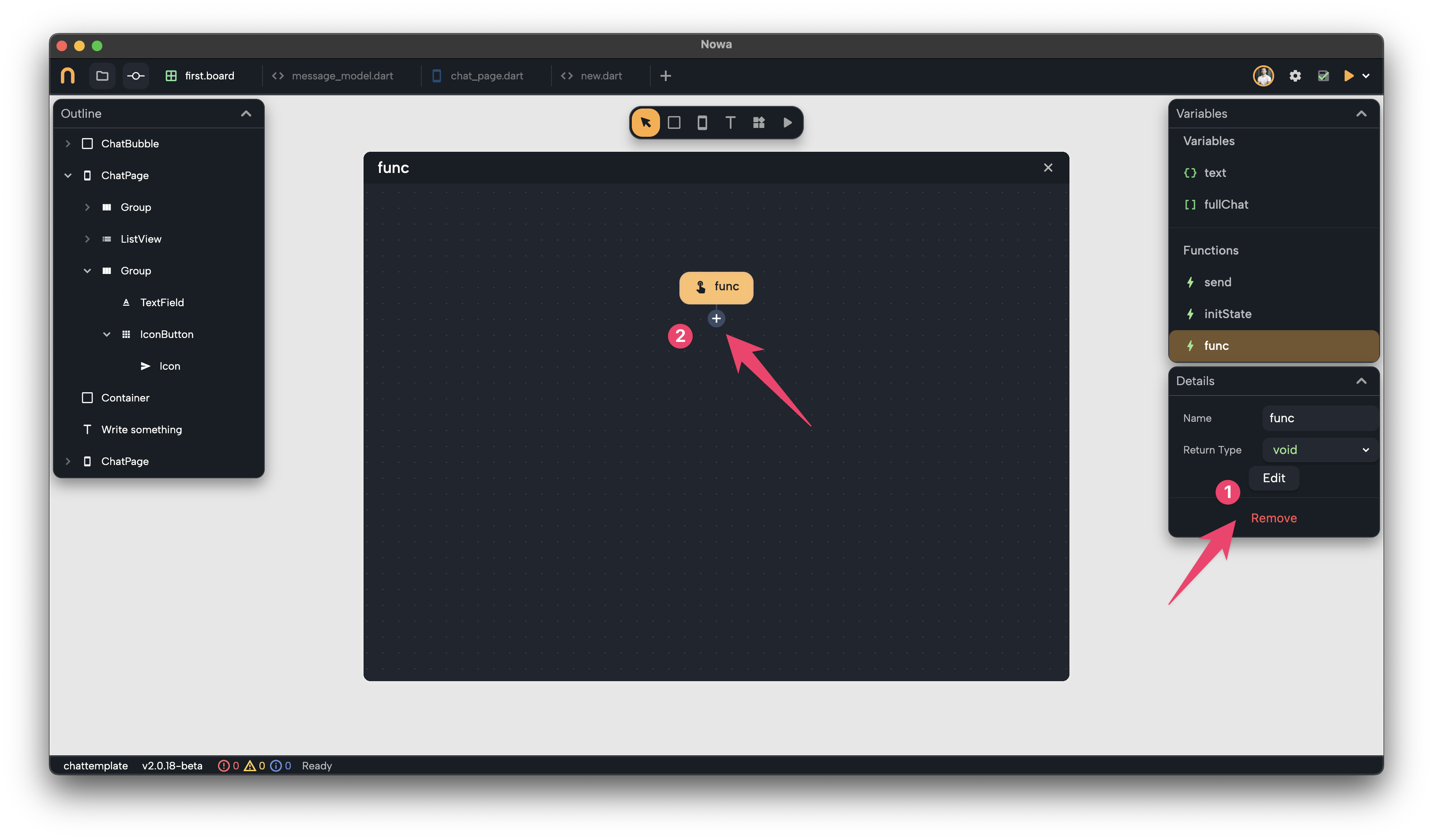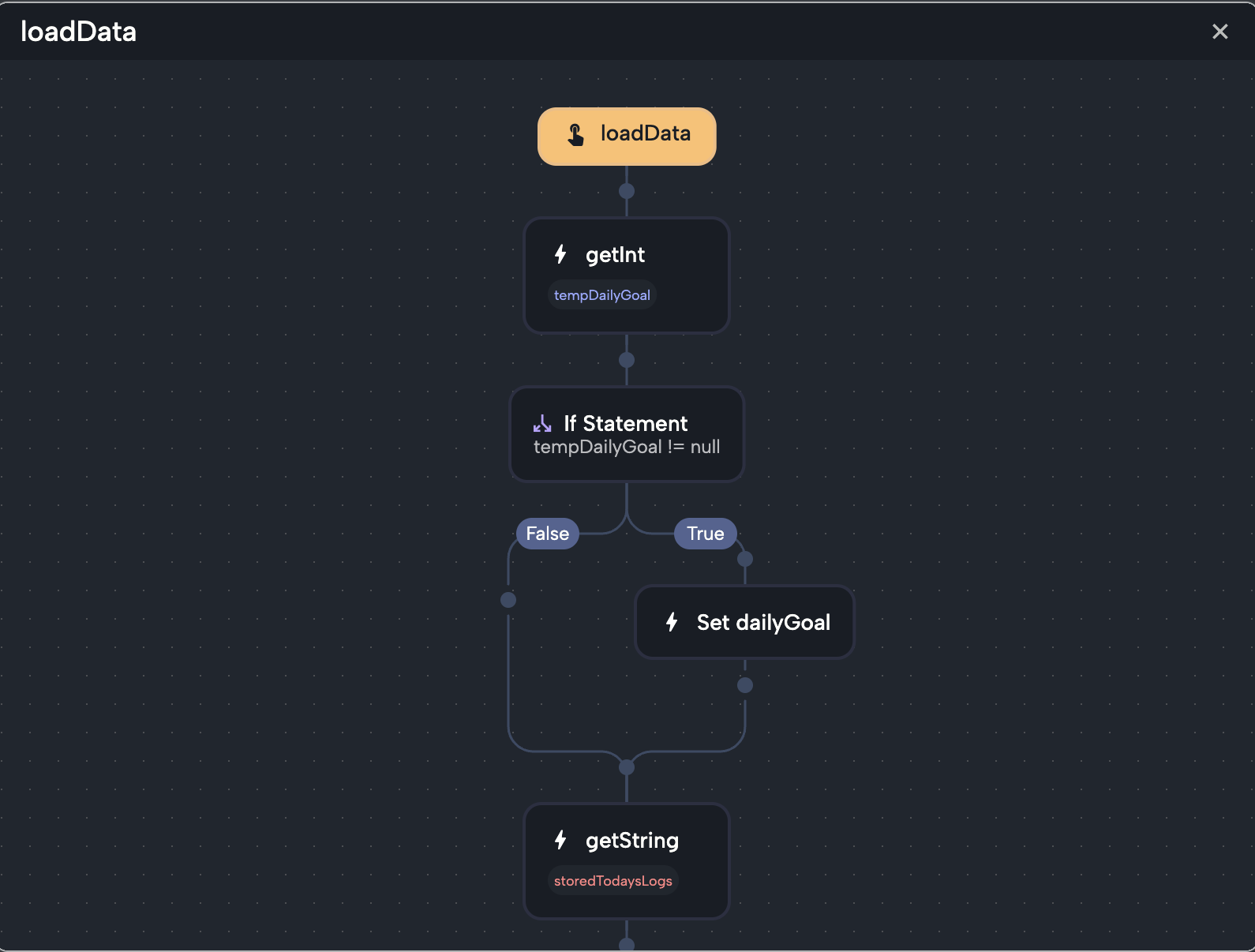Introduction to Circuit
What is Circuit?
Circuit is the way you build logic in Nowa. It works by connecting nodes together to create a logic graph that will be executed sequentially.
This visual approach allows you to define how different operations and conditions interact within your application.
How to Access Circuit
You can access Circuit when working with functions in Nowa.
When creating a new function inside a screen or component, select it and click on "Edit" to open Circuit.
For events—functions that are triggered by specific actions, such as the On Pressed event for a button widget—you will find an "Edit" option next to the function. Click it to modify the logic.
For the following example, click on "Edit" to open the function in Circuit, then click on the small circle below the function name to add a node below. \

How Does the Circuit Work?
The logic consists of nodes connected in a vertical structure.
At the top of the graph, you will see a yellow node representing the function name. Selecting this node allows you to create parameters for that function.
To add new nodes, click on the + button below an existing node. A menu will open, displaying available nodes to construct your function.
The execution flow follows a top-to-bottom approach, meaning nodes are executed sequentially from top to bottom.
Let's see a small example on how Circuit executes a logic. In the following example, we have a function called "loadData".
The first node, which is right below the function name, loads an integer from the local storage and store it in a new variable called tempDailyGoal. This node called Value node since it generates a value (the value from the local storage).
Then, there's an if statement node, which will determine the flow of the logic according to a condition tempDailyGoal != null, which if true, then the flow will go on the right path.

Types of Nodes
Action Nodes
These nodes execute actions without returning a value.
Examples include Print (outputs information), Refresh (reloads a screen), and Clear (removes stored data in SharedPreferences).
Value Nodes
These nodes return a value that can be used later in the logic.
Examples include calling another function that returns a result or performing math or logical operations like division or comparison.
If a node returns a value, a "Store result" section appear in the details panel of the node, allowing you to store the result in a variable (either new or existing).
For example, a division node under "Operators" category can be used to determine the division of two values. This node will return the result of the division, which then can be stored in a new variable or existing one.
Some nodes can function as both action and value nodes. A good example is a function node that performs an action and returns a result, such as fetching data from an API and returning the response.
Any node that retuns something will have the section of "Store results" appears below
Control Flow Nodes (Compound Nodes)
These nodes control the execution path based on conditions. For example:
- If Node directs execution to the true or false path based on a condition.
- Try Node follows a default execution path but switches to an "On Error" path if a failure occurs.
Managing Nodes
Deleting a Node
Click on the node, then right-click and select Remove, or select the node and press Delete on your keyboard.
Moving a Node Up or Down
Select the node, then right-click and choose Move Up/Move Down, or use Shift + Up/Down Arrow Keys to move it up or down.
Returning Values in Functions
If a function has a return type (not void), such as an int-returning function, use the "Return" node at the end of the function to return the final result.
Creating Local Variables in Circuit
The "Create local variable" option allows you to define a temporary variable that exists only within the function.
Unlike screen/component-level variables, these local variables are deleted after execution, so it's used temporsrty to hold a value returned from one of the nodes to be used in another node below.
While you are building the logic, you can see the generated code right away! If you are using the hybrid approach (having your project locally while opened in an IDE on the side), you can open the same file there and see the generated code update in real time when modifying the circuit, such as adding a node. If you are not using the hybrid approach, you can close the circuit and head to the code section of the file to see the generated code. You can also modify the generated code of the function, and the result will sync back to Circuit.
Future Topics
The Menu nodes will be explained in a later section.
Circuit provides a powerful way to define logic visually, ensuring clarity and efficiency in function execution.